by Carolynn Look
Beijing, China. Hundreds of buildings tower over the people that bustle between them every day. Some get demolished, some get rebuilt, some just get a fresh layer of paint. But what strikes you as you walk through this eclectic monster of a city is that none of its buildings are covered in tags or graffiti as they are in other metropolises. Or so you would think on first sight.
Coming from the capitol of street art in Berlin, I was astonished to see that Beijing is so “clean”. But moving away from the centre and beyond the 2nd Ring Road, graffiti starts popping up in various neighbourhoods, often with local tag artists claiming a certain territory or mobile spray-painted images immortalised (until removed) on the sides of public buses. The street art culture in Beijing is in fact a growing sphere of artistic expression: hidden, yet increasingly powerful.
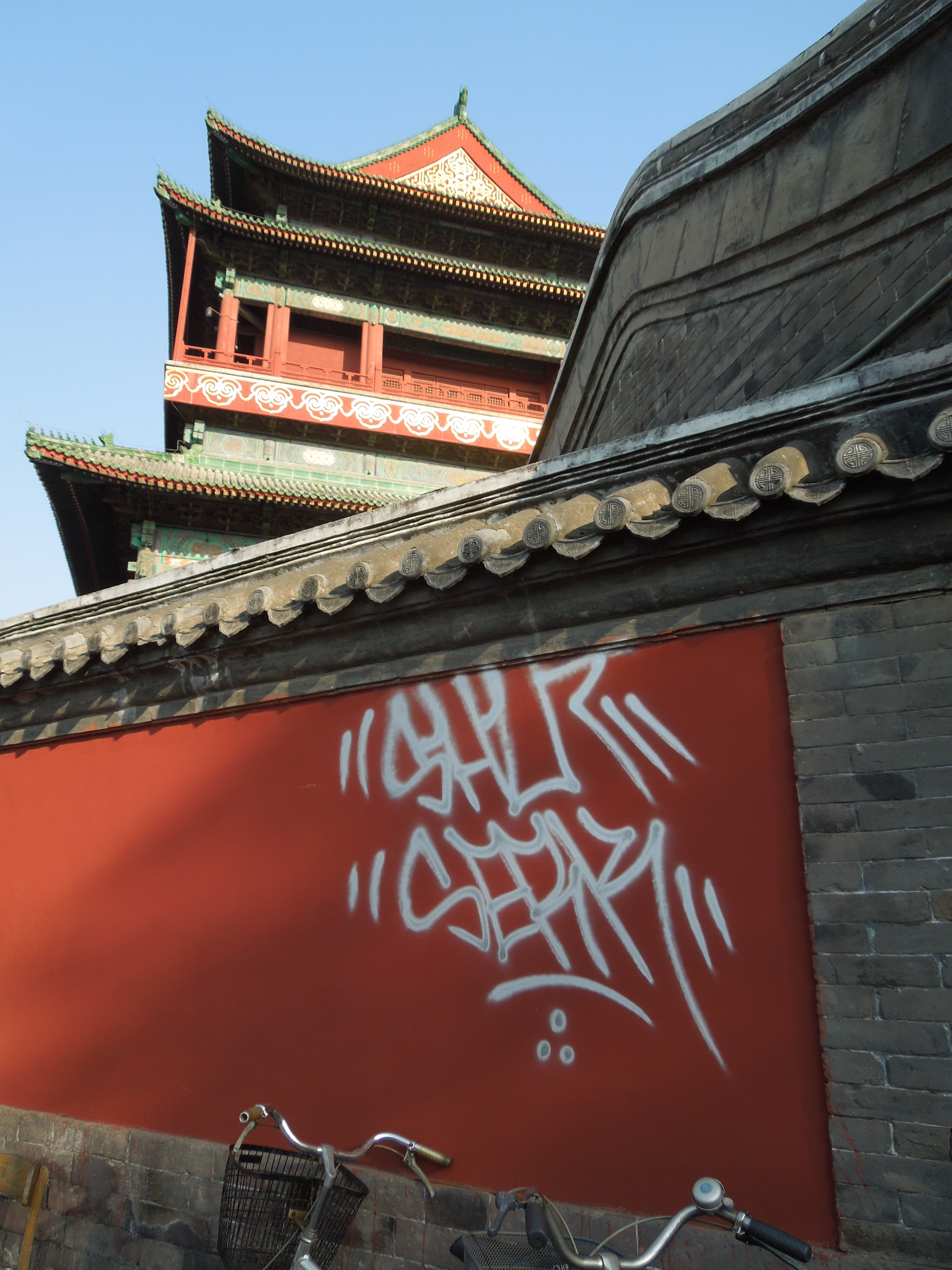
The phenomenon is not as new as it first appears. According to the 2005 China Heritage Newsletter by the Australian National University (ANU), a 2004 archaeological project revealed that graffiti on the Great Wall was already popular in the 16th century, when “soldiers’ wives decorated parts of the wall with images of clouds, lotus blossoms and ‘fluffy balls’ (xiuqiu), ‘symbols of peace and love’.” Today, graffiti has come back with renewed strength, and to fulfil quite a different purpose.
See Also: Arts for Social Change? Creative Projects Empowering Women and Youth
In the past 17 years, graffiti has become an inspiring field of dialogue between the public and the central Chinese government. Beijing-based artist Zhang Dali opened the city up to street art in 1995, after spending several years in self-exile in Italy, where he became familiar with the techniques of graffiti and its ability to arouse spontaneous communication. Upon returning to Beijing, he started by spraying in the hidden side streets and underpasses of a city that seemed more like a gigantic construction site. Later he left his mark on old, run-down buildings scheduled for demolition, claiming back the space that had once been important to people living there. His symbol was his spray-painted profile, appearing like a ghost in alleyways and creating a mysterious presence, as well as his tag “AK-47”. Several days after spraying for the first time on an overpass in Beijing, Zhang walked by and saw that someone had written underneath “What the hell are you doing? Who are you?” He took a picture of it and titled it “Dialogue”.
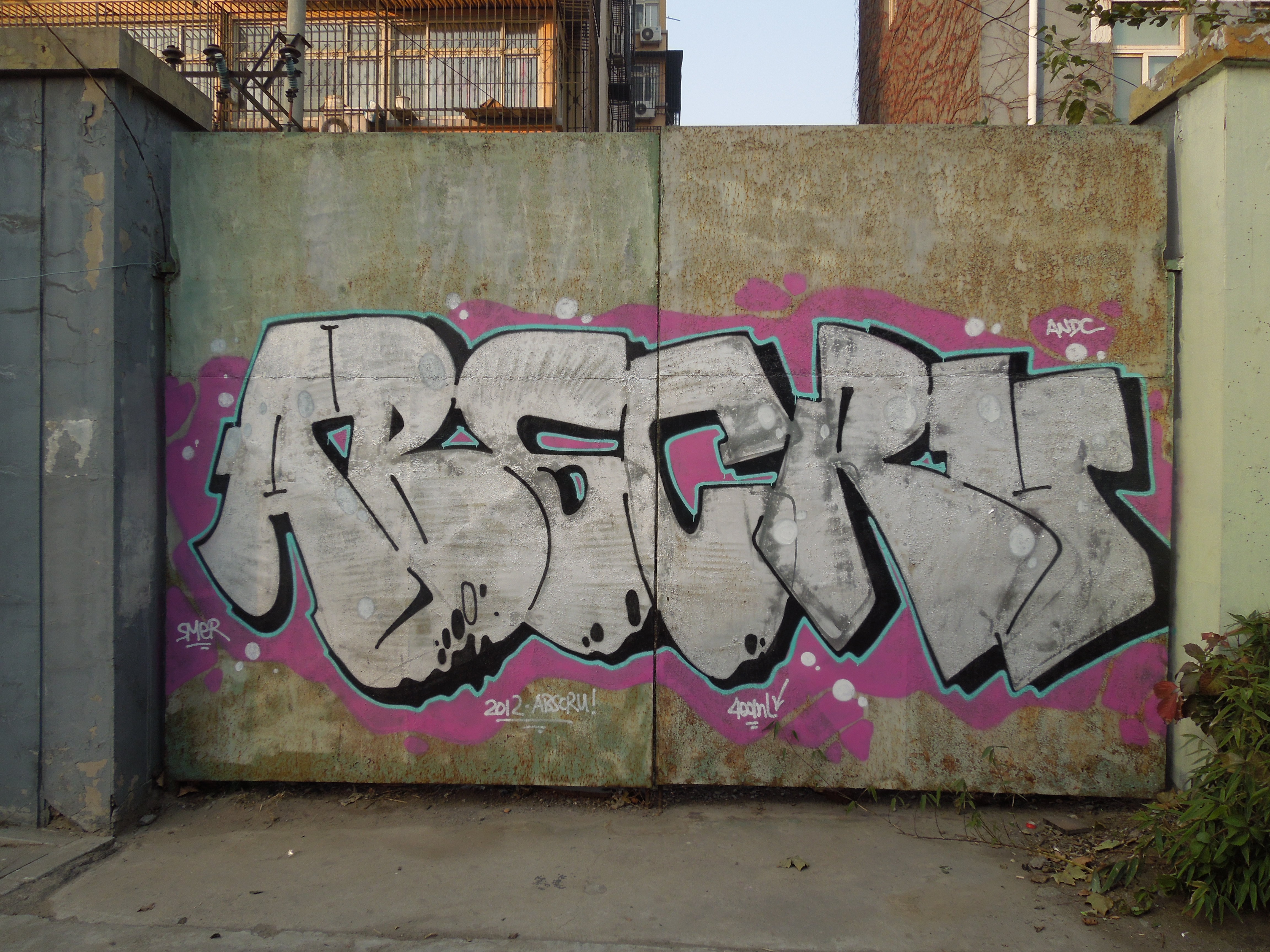
Although it wasn’t until three years after Zhang started spraying that he actually started making a stir, the effect was that he created a dialogue that soon involved the whole city. In 1998, several cultural magazines began discussing the cultural significance of graffiti: whether it could be considered art, its coexistence with urban development, and what the social role of the artist is. In light of the debate, Zhang even gave up his anonymity to join in, and—although he was met with hostility by the press, who characterized him as a vandal—he used the chance to communicate with the Beijing public.
Little did he know that he started something that would soon transform the entire city. In the years leading up to the 2008 Olympics the government gave yet another push for rapid modernisation and, with that, destroyed a lot of the older traditional buildings to make way for new ones. The Chinese character chai (拆) was one that soon permeated traditional hutongs all over the city. It warned people that their homes, schools, work-places and lifestyles would soon be ‘demolished’, and replaced with show-offish skyscrapers, hotels and restaurants to impress and please foreigners. But this did not quiet the dialogue that had been created—far from it. When the Central Arts Academy was relocated because of the city’s renewal policies, its students decided to go around the city and paste the chai character on the buildings they didn’t like. This method of using official discourse as a method of resistance created a symbolic terrain for residents to partake in the moulding of their city.
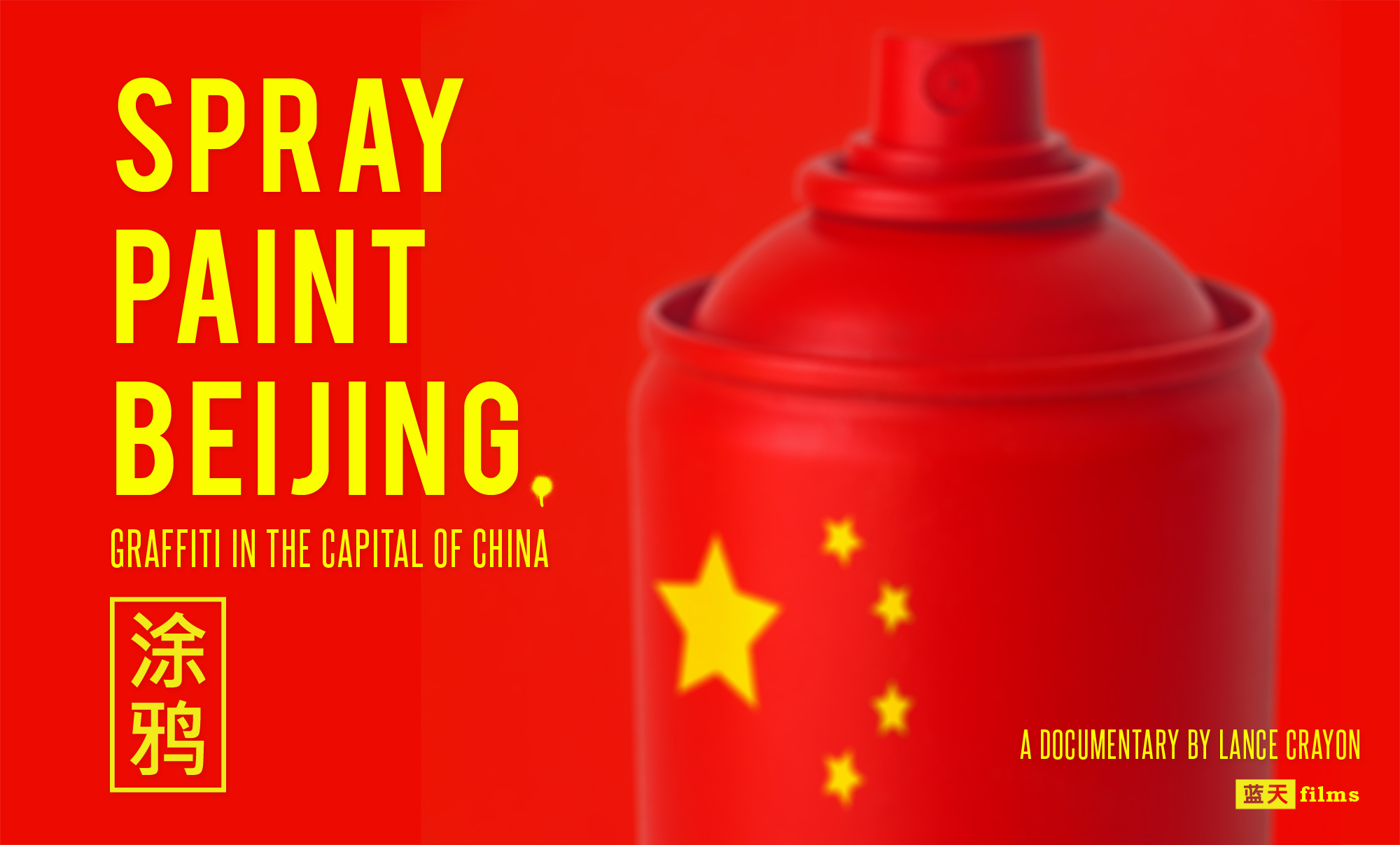
Today, graffiti is a trend that is on the brink of exploding in China. But the road has been bumpy, often met with mixed reactions by officials. Artists watch in dismay as the government paints over some of the oldest graffiti walls in Beijing to hide their creativity under a thick layer of grey. Some get arrested and put in prison for several days. Many feel that the government doesn’t care about the “aesthetic pollution” that is sometimes created by graffiti, but that they only care about what the graffiti is trying to express. But mostly the officials simply don’t know what to make of it. Street artist Zyko—speaking in a March 2012 documentary Spray Paint Beijing—says that the people, on the other hand, are always very curious about what he is doing. They stand by watching, smoking and drinking, interested in his message.
All in all there are only about 30 street artists in Beijing, of which less than half is regularly active. This is quite a low number for a metropolis, but their works have had a great impact, if only to get observers to question their role in producing and reproducing the city they live in. Graffiti is impossible to ignore. It is always there on the opposite wall when you go through the door in the morning, or in the underpass when you’re walking to school. It can be a big detailed mural, or a scribbled tag. No matter the form, it’s impossible not to listen to its message, even if one does not agree with it. In many ways, graffiti in Beijing has been less a criticism towards the government than towards the passivity of the public. It has forced them to literally open their eyes.
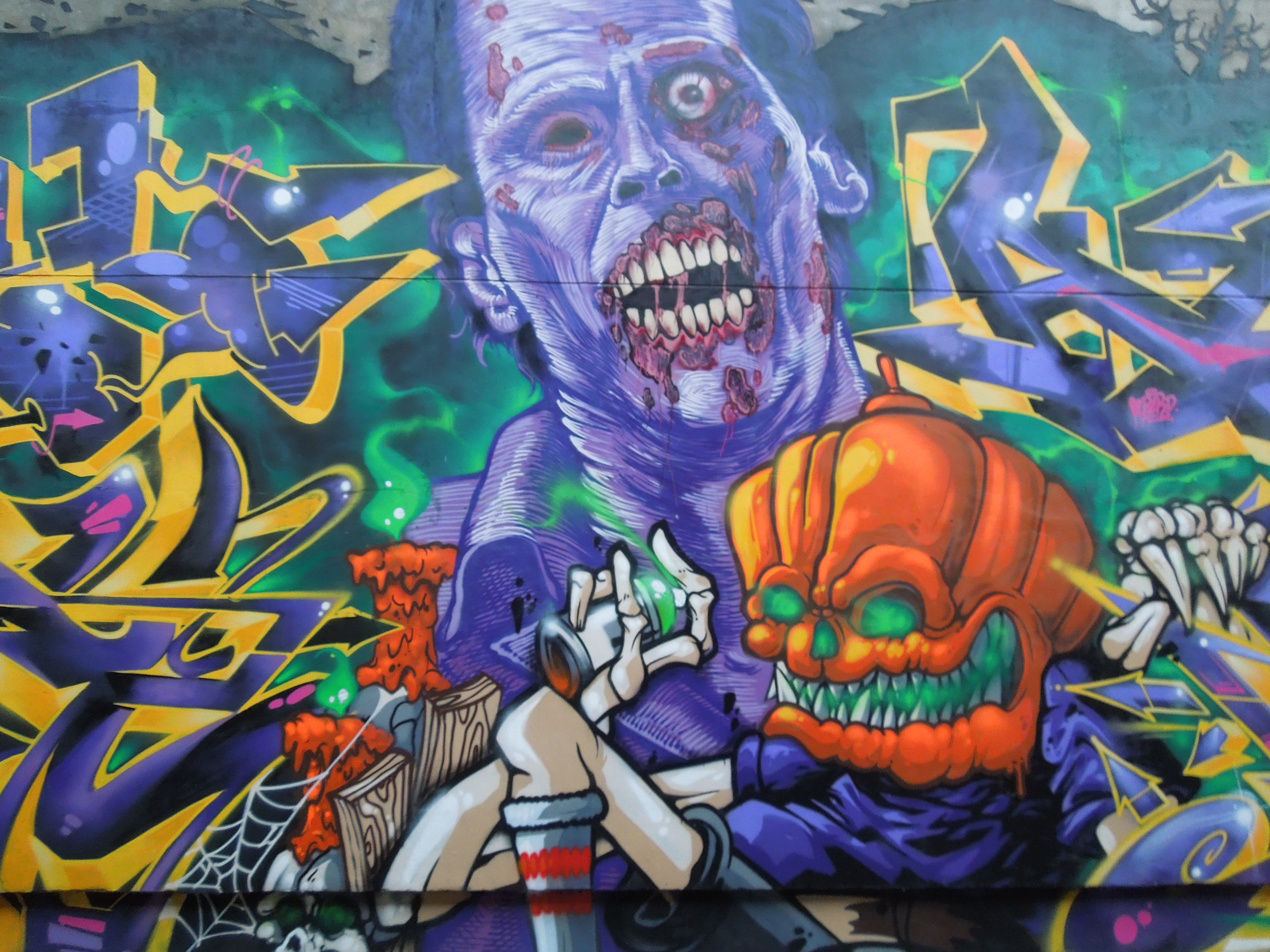
The significance of street art in China is two-fold. Firstly, it is a manifestation of creativity and originality in a country that is criticized for its sole ability to replicate and mass-produce. Many say that the lacking element in the Chinese economy is creativity, but perhaps they have been selecting entrepreneurs from the wrong places. The movement proves that Chinese people are capable of thinking outside the box, but the ones who end up in high positions are the ones who conveniently think inside of it. Sadly, these are the ones who get to decide the fate of the city.
Secondly, the intricate platform for dialogue that street art has created counters the West’s overly radicalized views of repression in China. It is a form of resistance specifically contextualized in Chinese culture, using indirect protest, irony and allusion to convey a message, while Western movements use ‘louder’, more black and white methods such as enemy-targeting and solution-finding, which don’t work in China. The roles of individual actors are more ambiguous and less dramatized than a Western lens may lead us to believe.
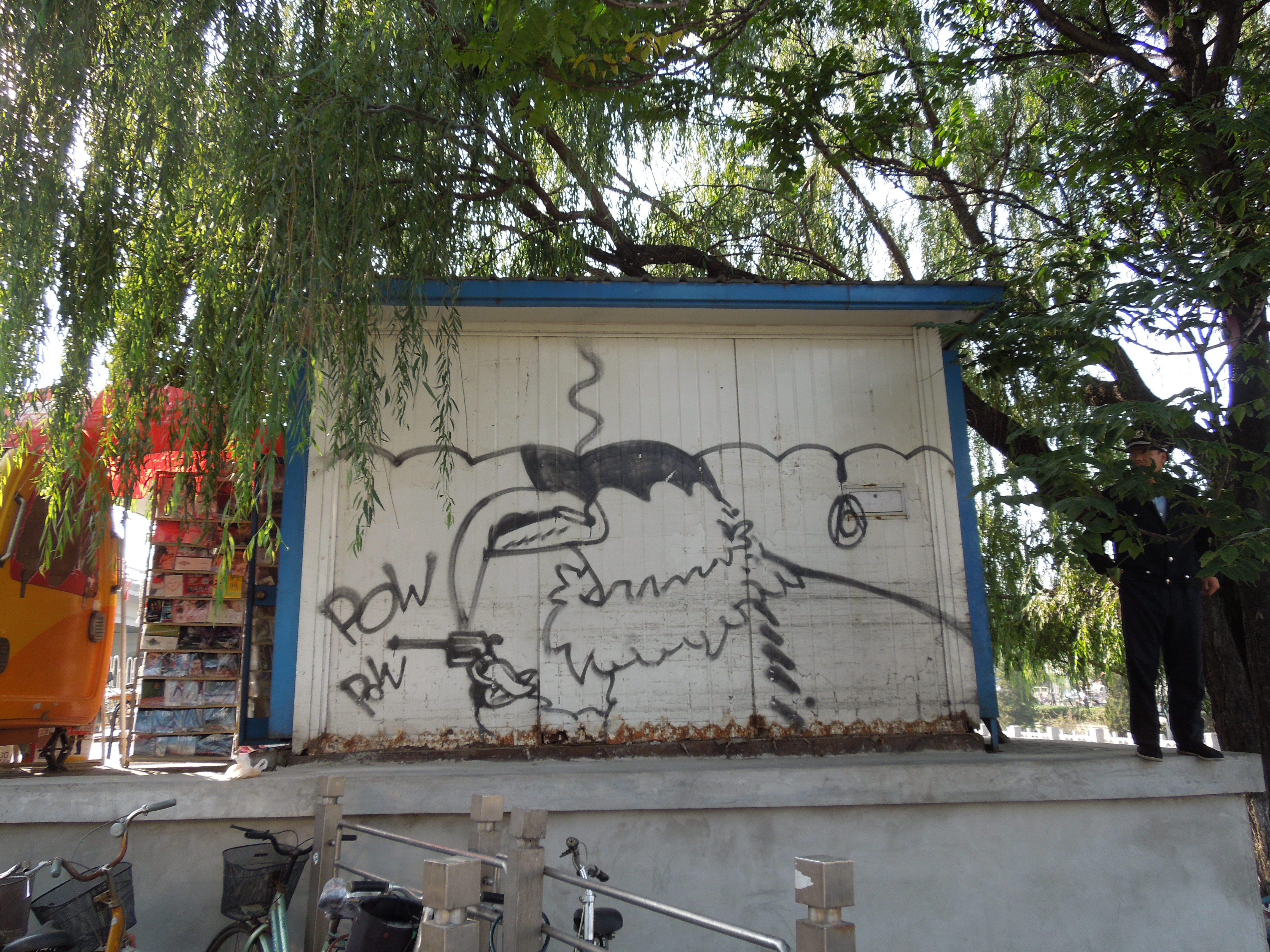
One could argue that repression of street artists is stronger in the West: A recent article published in The Huffington Post was titled “’Beijing Was More Open-Minded’: Street Artists Speak Out Against London’s Olympic Clean Up”. The fact that, in China, graffiti has not led to censorship, but rather to an alternative form of communication is worthy of recognition.
The scene is not only growing in Beijing: The rest of China has taken out its spray cans too. Shanghai is quite the hotspot for famous street artists, even featuring works by renowned Portuguese street artist Alexandre Farto that goes by the alias Vhils. Chongqing—a major city in Southwest China and one of five state capitals—has one of the longest graffiti walls in the world, stretching across 1.25km. Spray Paint Beijing a great resource for learning more about this artistic movement that is on the verge of exploding.
If art has the ability of transforming and inspiring society, this must surely be one of its greatest moments.
Carolynn Look is the China Correspondent at GSDM and is a Research and Communications Intern at the Institute for Advanced Development Studies (INESAD).
Do you know any inspiring stories of people using art to make a difference in their community? Share in the comments below.
This article originally appeared in the October 2012 issue of Global South Development Magazine that focused on inspiration.


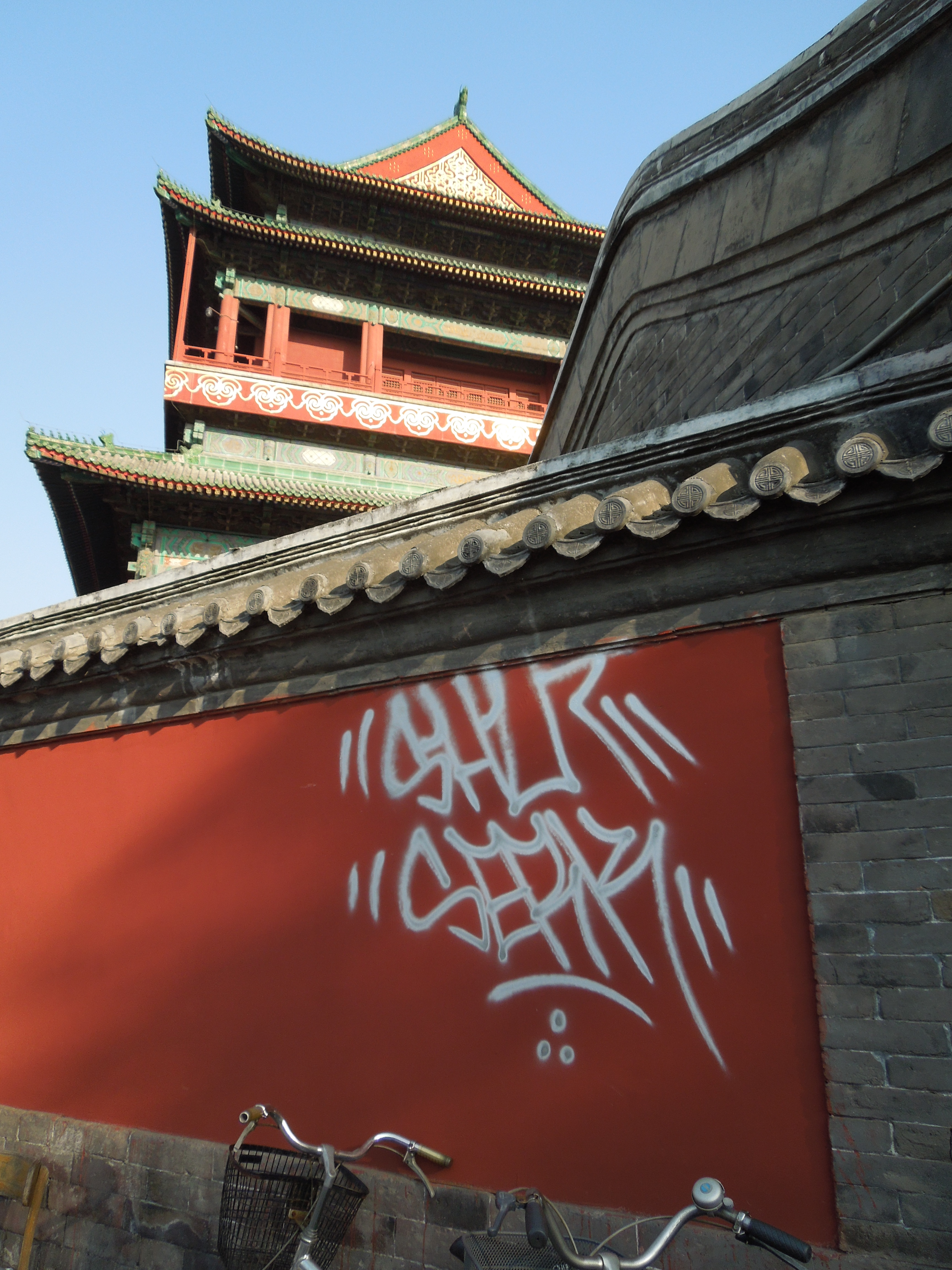








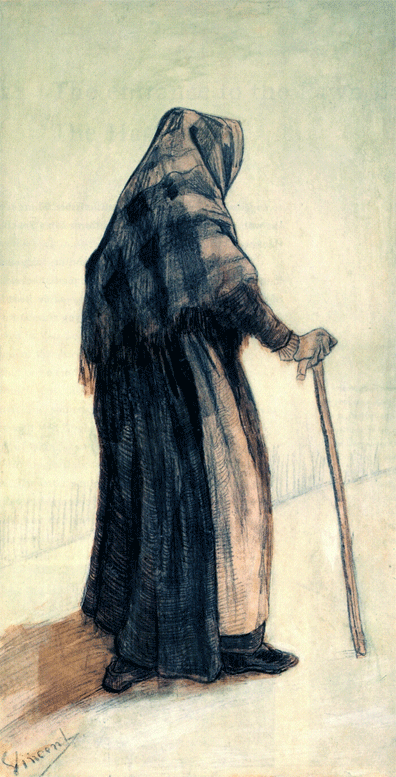
[…] that act may actually come from the bubbling up of Chinese street art, which began in 2005. Writer Carolyn Look has a good story on the emergence of street art in Beijing and Shanghai and how the counter culture fights back […]
[…] that act may actually come from the bubbling up of Chinese street art, which began in 2005. Writer Carolyn Look has a good story on the emergence of street art in Beijing and Shanghai and how the counter culture fights back […]